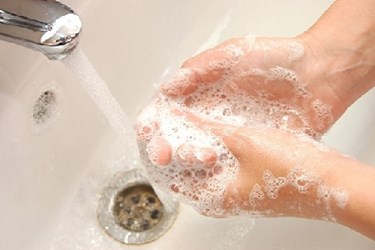Hand Washing: An Essential Part Of Any Food Facility's HACCP Program
By Laurel Maloy, contributing writer, Food Online

In the second of week of the HACCP challenge, Amanda Evans takes us back to the basics of any food-safety, HACCP plan — hand washing.
The Food Safety HACCP Challenge is in its second week. Week one’s challenge — reviewing in-house pest control placement and the devices’ recorded locations — had a good response. Amanda Evans, the HACCP Mentor, has issued what she considers a much-more manageable and easier HACCP challenge this week.
According to Evans, this is the single-most neglected area of non-compliance when she audits food-safety management Hazard Analysis and Critical Control Points (HACCP)-based programs. She calls it a “no-brainer” and it is the most-basic preventive measure for curtailing the spread of illness, including foodborne illnesses.
Medical contributors from all of the major networks constantly tout the benefits of hand washing. The Centers for Disease Control and Prevention (CDC) encourages the same. Children in daycare, barely old enough to walk, are being trained to wash their hands frequently during the day to prevent the spread of infection. And yet, this most-basic prevention method is one of the most forgotten principles, in the consumer’s kitchen and in the food-processing facilities. In fact, as early as 1996, studies broadcasted CDC statistics estimating that as much as 97 percent of foodborne illnesses can be linked to improper handling at home and in restaurants. Advertising and public service announcements have served to make the consumer more aware; but what would the consumer think if they knew the food-processing industry is guilty of discounting one of the primary ways to prevent the spread of foodborne pathogens?
There are about 250 different types of algae, bacteria, molds, parasites, and viruses that can be classified as foodborne pathogens and transmitted to humans by way of the food they eat. We hear about the most common, such as Botulism (Clostridium botulinum), Campylobater, Cyclospora, E. coli (Escherichia colia), Hepatits A, Listeria, Norovirus, and Salmonella. These are the ones that cause the largest outbreaks and are the most deadly, with Listeria and Salmonella topping that list. However, the ones we don’t hear about as frequently, simply because they don’t cause the same level of illness and death, are just as devastating to the person infected.
There is no excuse for not washing your hands, or for not ensuring that your employees do so. The fact that Evans comments on how often she writes non-compliance reports on facilities who do not maintain hand-washing stations properly is indicative of an industry-wide problem. This is, by far, the easiest and most visible line of defense against foodborne pathogens; why do the statistics point to it not being a priority? When devising an HACCP plan, hand-washing should be categorized as a Critical Control Point (CCP). It should be trained on and monitored. Hand-washing supplies and running water, hot or cold, must be available at every opportunity.
Even if employees wear gloves, have you considered the fact that they must handle those gloves as they are putting them on? If they haven’t washed their hands, the gloves are going to be just as contaminated as the food you are trying to avoid contaminating. The CDC, in their Clean Hands Save Lives campaign, explains the science of proper hand washing. It may be heard so often it is redundant, but in this case, it can’t be said often enough.
In addition to keeping your facility’s hand-washing stations easily-accessible, clean and well-stocked with soap and clean paper towels, it may be necessary to reeducate your workforce. You can’t assume that everyone has been raised with the hand-washing habit well-ingrained, or that they are doing it properly, if at all. It may even be prudent to have public washing facilities within each processing section, and within view of other employees. Then, anyone that leaves the processing area is required to wash their hands as they return, or risk the embarrassment of being called out by fellow employees and disciplinary action. It will also ensure a cleaner washing station; one that management can monitor with cameras if necessary.
The very idea that such a simple task must be “taught” and “monitored” doesn’t sit well or make sense to many of us. However, the polls on the subject speak volumes. In a 2011 poll, only 60 percent of men and 74 percent of women say they always wash their hands after using a public restroom. That is in a restroom they don’t normally frequent. It stands to reason that in a place they work or live, the numbers would be far fewer. So, accept the challenge. Beef up your facility’s HACCP plan with better hand-washing procedures.
